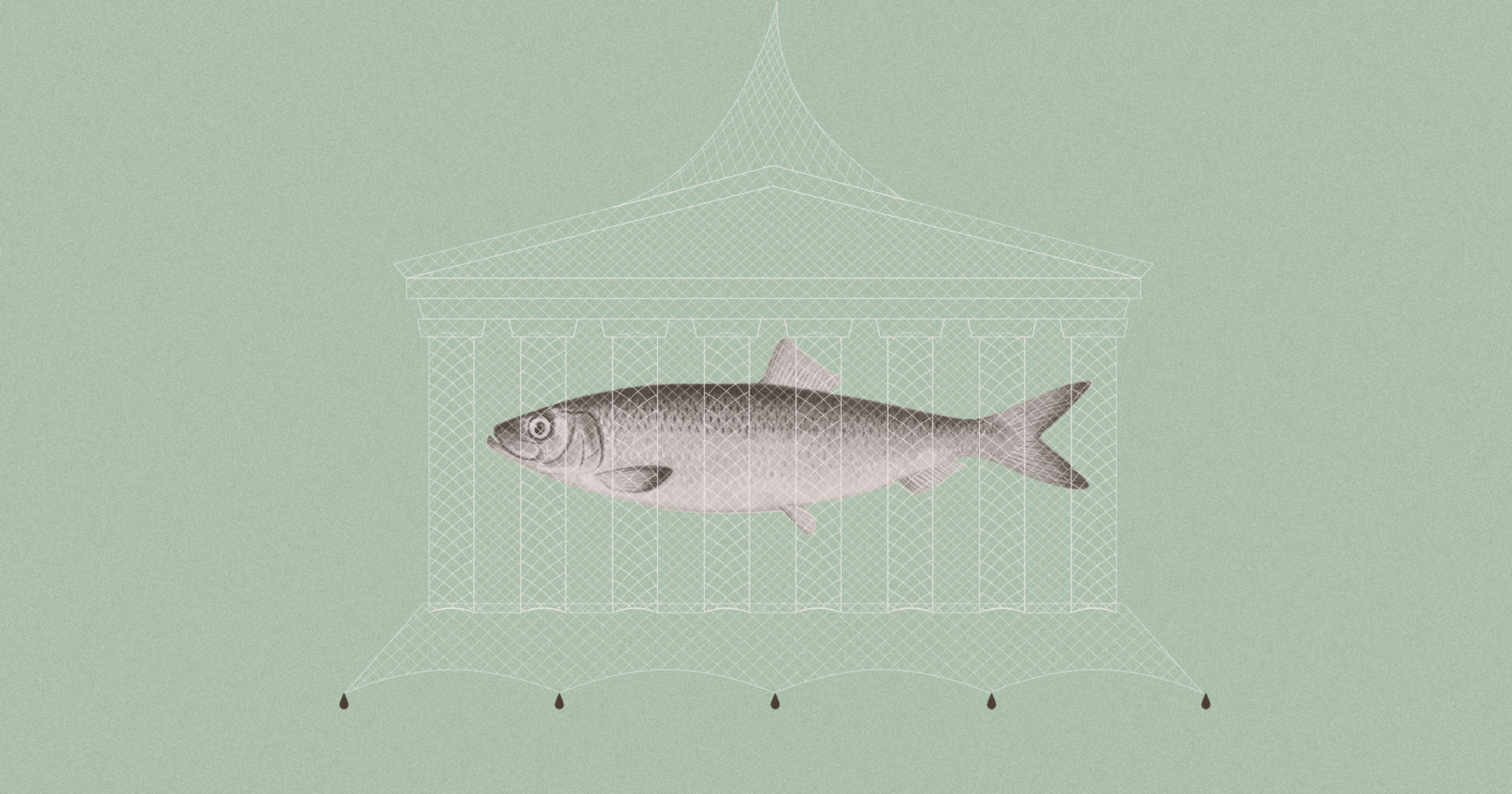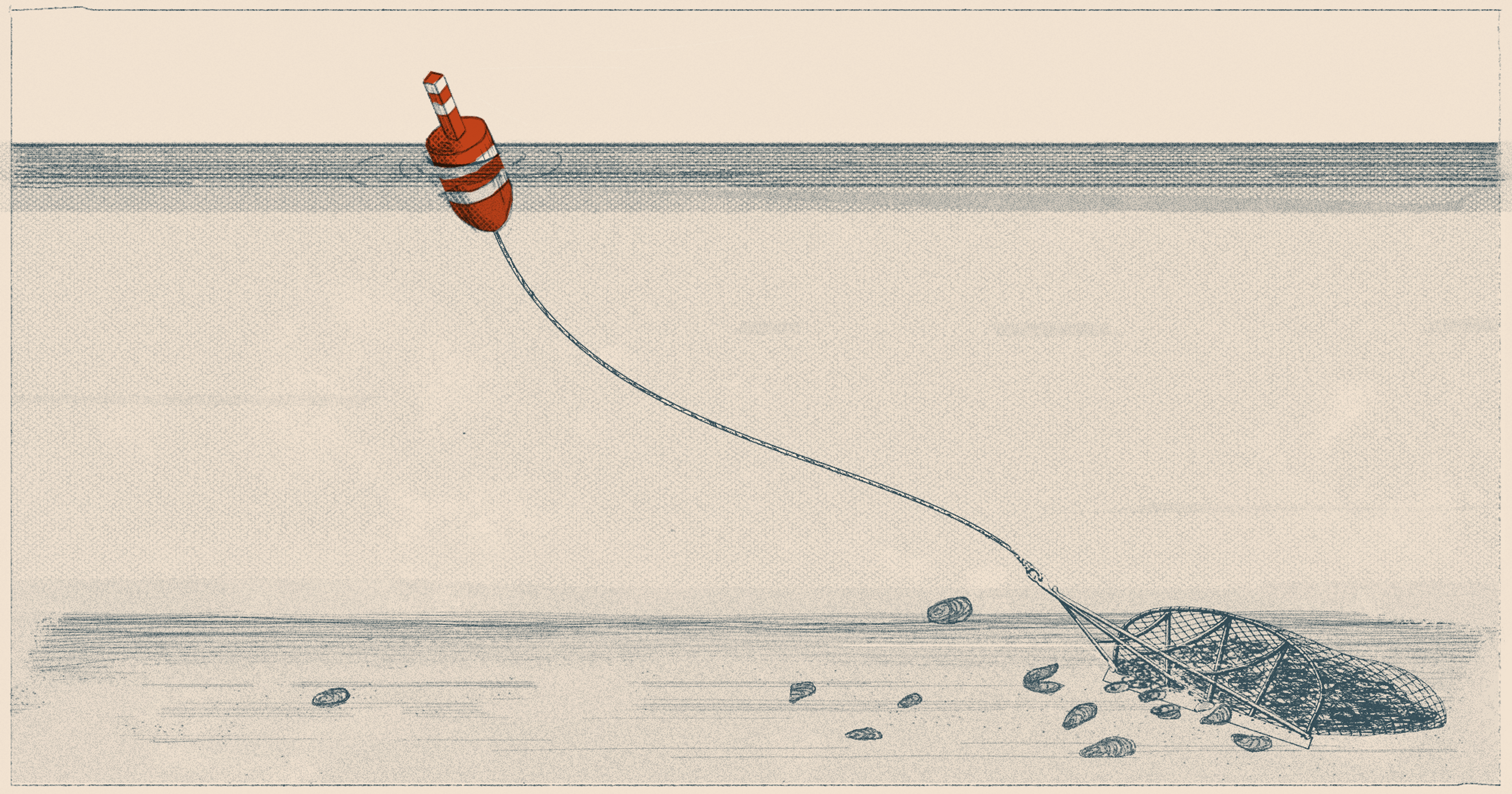U.S. fishers say that sharks are nibbling off their catch before they can haul it to deck — causing much frustration and animosity toward sharks.
Avid sports fisherman Ernest Hemingway hated sharks. During the 1930s, he spent years trying to land bluefin tuna around Bimini in the western Bahamas. Hooking the fish was easy; the problem was hauling it to the boat before sharks took a bite. For three years in a row, anglers hauled up mutilated tuna, often “apple cored” — nothing but scraps of flesh hanging off the spine. It’s perhaps unsurprising that the protagonists in Hemingway’s novel The Old Man and the Sea clubbed and knifed sharks, and Hemingway himself shot at them with a Tommy gun.
Fishermen around the world have long contended with “depredation” — the partial or complete removal of a hooked fish before it’s landed, by sharks or other marine predators. But in recent years, many U.S. fishermen, especially in the Southeast, have reported an uptick in depredation by sharks — including commercial fisheries in the Gulf of Mexico.
There has been a particular uproar about the issue among recreational fishers, many of whom say they’ve seen a clear increase in depredation. In one survey of 541 North American anglers, 77% said they had experienced depredation in the last five years. “It’s gotten ridiculous,” one angler said in a recent workshop on the issue. “I’ve had days where I’ve lost a dozen snapper in a row by sharks.”
For anglers, the perceived increase has been a source of growing frustration as well as animosity towards sharks. Many blame the uptick on conservation measures taken to protect shark species, some of which are only now starting to rebound after years of overfishing. Many have complained to fishery managers to no avail, and some are now more likely to go after sharks themselves or are advocating for greater shark harvesting. But experts say shark recovery likely isn’t the only culprit — fishing practices play a role too. Scientists and fishery associations are now working to find solutions that will allow peaceful coexistence between sharks and fishers.
“I think a lot of people are feeling frustrated at this point,” said Martha Guyas, southeast fisheries policies director at the American Sportfishing Association (ASA), which spearheaded legislation to boost research into depredation that was passed by the U.S. House of Representatives earlier this year. “There’s just a lot of questions about why this is happening [and] how to avoid it.”
Depredation can bring a host of problems. For commercial fishers, the lost catch can make fishing less economically viable — although many likely see depredation as the cost of doing business, said fisheries ecologist Marcus Drymon of Mississippi State University. Depredation can sometimes also result in a loss of gear; in some years, shrimp fisheries in Georgia, for instance, have seen 32% of trawl nets damaged by sharks. In a 2022 workshop that convened commercial shrimp industry representatives from along the Gulf and South Atlantic coasts, many participants said depredation has become significantly worse in the last few years. While dolphins also depredate on shrimp nets, participants said they’re much less of an issue than sharks. “Dolphins can rip the net,” one shrimper said, “but sharks will take a whole chunk out of the net.”
Several participants from the South Atlantic said they felt that, much like dolphins, sharks have learned to associate the noise of the engines with food. “Gulf Sharks are smart and they adapt,” one shrimper noted. “They are just always looking for a way to get an easy meal. It’s hard to predict when you are going to have the problem and when you aren’t.” Another shrimper commented, “Sometimes you just have to work through the sharks regardless of how bad they are if you want to catch shrimp.” Many shrimpers said they often hauled up their nets more often in situations where they can’t avoid sharks, so they can inspect them for damage.
Depredation is also frustrating for fishing guides — who say it hurts their livelihood — as well as individual anglers, even when they intend to release fish after they’re caught. In the tarpon fishery in Bahia Honda in the Florida Keys, recent research found that 15.3% of successfully hooked tarpon are nibbled by hammerhead sharks — killing fish that would otherwise be released back into the sea.
”You’ve worked really hard to get all the way out there to finally get hooked up with this really nice fish, and to see it depredated is a painful experience.”
Drymon, an angler himself, has also experienced the tightening of the line when a fish bites the bait, followed by a “pop” when that pressure suddenly disappears, indicating that a shark has grabbed the fish, or part of it. “As someone who fishes often, I sympathize,” Drymon said. “Especially if it’s an offshore species or a deepwater or a pelagic species, you’ve worked really hard to get all the way out there to finally get hooked up with this really nice fish, and to see it depredated is a painful experience.”
Depredation influences fishermen’s attitudes, instilling a belief that sharks are “overprotected” at the expense of fishing opportunities. In one workshop that convened charter fishermen from across the Gulf of Mexico, participants frequently noted a need to increase the commercial shark harvest, Drymon said. Surveys by ecologist Grace Casselberry and her colleagues at the University of Massachusetts Amherst suggest that experiencing depredation makes fishing guides more likely to harvest sharks, in an effort to protect their target species. “People reported that they were much more likely to be inclined to target and harvest sharks in the future,” Casselberry said.
Certainly, the recent signs of recovery of some shark species in the southeastern U.S. may well have contributed to the perceived spike in depredation — although what fishermen see as an “overpopulation” today is still a far cry from healthy shark population levels a century ago, well before sustained shark harvest.
But shark recovery isn’t the full explanation. For instance, the sandbar shark has shown signs of recovery since its harvest was banned in 2008, but its population fluctuations don’t align with the perceived increase in depredation rates in the Gulf of Mexico, recent research by Drymon and his colleagues found. Rather, the paper points to another contributing factor: Many places have seen a rise in the number of anglers, which means more hooks in the water, increasing the odds of sharks encountering and snatching the catch. While anglers’ frustrations with depredation are real, Drymon said, “I’m simply pointing out that … as much as the problem should be attributed to sharks, the problem needs to also be attributed to the fact that we’re just on the water a lot more.”
“As much as the problem should be attributed to sharks, the problem needs to also be attributed to the fact that we’re just on the water a lot more.”
It’s also possible that more sharks are learning to track boats in search of prey, as some shrimpers already suspect, Guyas added, though such learned behaviors are hard to quantify. Fisheries practices might also be adding to the problem, she said — such as requirements that undersized fish need to be released back into the water, attracting sharks to boats. Casselberry suggested there may also be some social media effect that heightens emotions around the issue when fishermen post about depredation.
But because most of the depredation data in recreational fisheries comes from surveys of anglers, it’s unclear how much of the perceived increase reflects a real increase in depredation rates; in commercial fisheries, independently collected data show an increase in depredation in some but not all fisheries in the region. That said, it may not matter if depredation rates have changed, Drymon said: “Perceived conflict is as important to address as any real conflict.”
The solution, however, is not to harvest sharks, predators that are conserved due to their ecological importance, Casselberry and Drymon said. Other cases of human-wildlife conflict, like between ranchers and reintroduced wolves in the Western U.S., tell us that targeted predator removal doesn’t help much to reduce the conflict, and it also tends to pit conservationists against ranchers. (The ASA, meanwhile, suggested in a statement that “increasing catch limits or relaxing regulations on shark stocks that can withstand additional harvest should be considered where appropriate and supported by science.”)
Fortunately, there are other solutions. Anglers could move to new, potentially shark-free locations after experiencing depredation in one spot, Drymon said. Casselberry added that fishermen should make sure to use heavy fishing gear to quickly reel in large fish; she’s seen some tarpon fishers show up with light fishing rods, taking them 45 minutes to land a big fish.
“Sometimes you just have to work through the sharks regardless of how bad they are if you want to catch shrimp.
Drymon is also testing the effectiveness of higher-tech solutions like electronic, magnetic, or chemical shark deterrents. The Zepellin, for instance, is a $70 gadget that can be attached to fishing lines and emits magnetic signals that overwhelm the sensory organs in sharks’ noses that detect electromagnetic fields. “I imagine a shark getting like a brain freeze or a headache and just staying away from that fish that is within the enveloped field of this Zeppelin,” Drymon said.
Ultimately, though, more research is needed to work out which solution will be effective in a given situation. Guyas hopes the SHARKED Act — the full name is Supporting the Health of Aquatic systems through Research, Knowledge, and Enhanced Dialogue — which is now awaiting approval by the U.S. Senate, will help. It would establish a task force of fishery managers to identify priorities for research, develop strategies to reduce depredation, and encourage better coordination between fisheries managers as well as better communication with anglers. At the moment, Guyas said, “I think where anglers are struggling is knowing which tools to use in different circumstances, and in some cases, just what tools are available to them.”
Although Hemingway might have preferred to see sharks disappear altogether, he also found effective, non-lethal solutions. Using larger fishing spools and attempting to reel in the fish as quickly as possible helped him land the first intact bluefin tuna in May 1935 — after the three-year dry spell. The solutions to shark depredation today will similarly demand changes in fishing habits. “I’m not going to be out here advocating for people to stop fishing. I think it’s a great way to connect with nature and really appreciate the environment,” Casselberry said. “But we need to figure out how we can let these two things coexist.”











